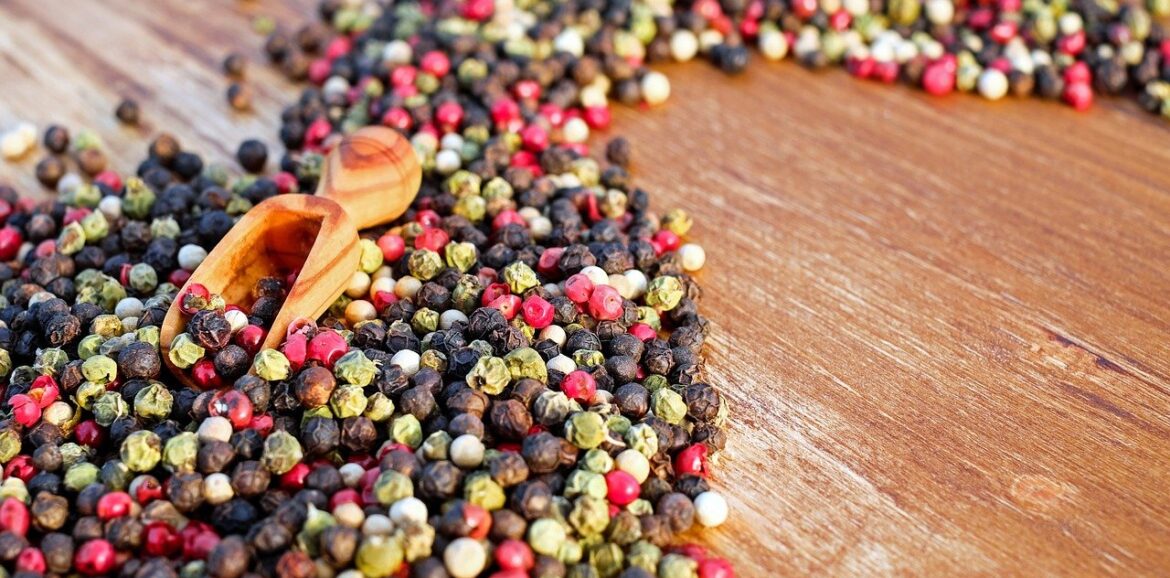As we continue with HOLISTICALLY SPEAKING, today we will spotlight BLACK PEPPER as our third culinary spice for National Nutrition Month. Sometimes called black peppercorn, piper, or pepper for short, the attached graphic shows its benefits, but here I’ll provide a brief history and a few culinary tips & tricks.
Native to southern India and Sri Lanka, while cultivated in tropical climates, black pepper comes from the fruit of a 3+-year-old Piper nignum tree/plant based on when its harvest time and processing method. For example:
- Black peppercorn is picked unripe and dried.
- Green peppercorn is picked unripe and pickled.
- Red peppercorn is picked, ripe, and dried.
- White peppercorn is picked ripe and soaked in water for eight days before drying.
Its most active ingredient is piperine, which makes it a warming carminative spice. This means that carminatives encourage good gut flora while inhabiting pathogens.
It’s typically consumed as traditional seasoning sprinkled on food but can even be taken in low doses as a capsule supplement or made into a milk beverage for excessive congestion. However, one should exercise caution as it can have adverse effects if taken in large amounts or if one suffers from excessive inflammation and tissue damage in the GI system.
PROPERTIES: anthelmintic, antibacterial, anti-inflammatory, antioxidant, aperient, carminative, circulatory stimulant, expectorant, rubefacient
SEE ALSO: Black Pepper Monogram
SOURCES:
McBride, K. (2019). The Herbal Kitchen. Newburyport, MA: Red Barren.
Webb., M. A. & Craze, R. (2000). The Herb & Spice Companion. New York: Metro Books.
